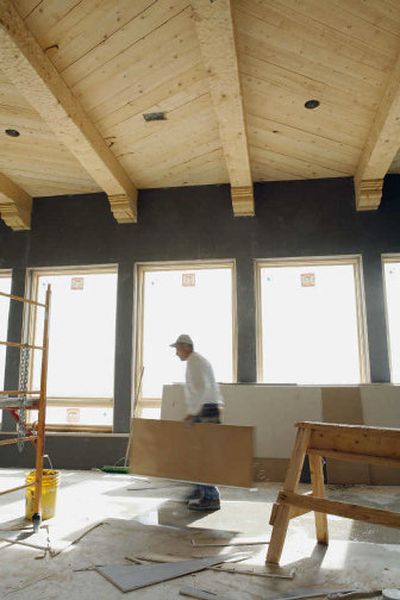Housing industry is turning green

ALBUQUERQUE, N.M. — Norm Schreifels is building a 5,500-square-foot dream home with unimpeded views of the Sandia Mountains, an outdoor dining room that faces the city lights and a handful of plazas and portals that take advantage of New Mexico’s weather.
At first glance, the home would send any conservationist into a frenzy.
But Schreifels, who runs Sun Mountain Construction Inc., wants people to take a closer look.
“We put a big house in here just so people would get mad and ask questions,” he said.
The answers all point to green building, a trend that’s picking up speed across the United States as homeowners struggle with high utility bills and leaders begin to talk about shifting the country’s diet from oil to more renewable energy sources.
Hundreds of homebuilders, architects and industry experts gathered recently in Albuquerque to share their ideas as part of the National Association of Home Builders’ Green Building Conference.
Dozens of them got the chance to tour the work of Schreifels and other contractors who are using better building techniques and environmentally friendly materials to create what some in the industry are describing as the future of homebuilding.
“Ten years from now it will be the way of doing it, not because it’s mandatory, just because it’s the right way of doing it,” said Armando Cobo, an Albuquerque designer who has been active in promoting the NAHB’s green building standards.
Cobo has been designing nothing but green houses for the past five years and hasn’t scared away a single client.
“It just makes 100 percent sense,” he said. “For a small amount of money, you can have a better house, more energy efficient house. Why would you want something that doesn’t meet those standards? It’s a no-brainer.”
And gone are the days when green-built homes teetered on the fringe of being freaky with a mishmash of recycled tires and aluminum cans and awkward solar panels.
Now, solar power systems can be hidden on rooftops, insulation made of recycled material becomes invisible behind walls covered with nontoxic paint, and more efficient heating and cooling systems are woven into the home’s inner skeleton.
Green builders also use framing techniques that cut down on waste; some look for opportunities to use salvaged materials.
The beams and other wooden accents in Schreifels’ home come from timber harvested following a forest fire in northern New Mexico. The wood is just one example of the steps Schreifels — with help from Green Builder magazine — has taken to make the home a green example.
“It gets a little more of the checking and cracking in it, but I like that,” Schreifels said of the reclaimed wood. “Every one of these (beams) would have just stayed there and rotted out.”
Some builders who cater to the masses are going green by engineering heating and cooling systems to work more efficiently, framing thicker exterior walls to provide more insulation and installing low-flow toilets and other fixtures designed to conserve water.
But NAHB officials admit the number isn’t high and they want more mainstream builders to jump on board.
According to the organization, about 2,600 homes were built to some kind of green standard in 2002. That jumped to 14,600 in 2004 and it’s expected to multiply again this year, said Ray Tonjes, chairman of the NAHB’s green building subcommittee.
“It’s not rocket science,” Tonjes said of green building. “It’s really about common sense.”
Both he and Cobo noted that the basic principles date back centuries to a time when people were conscious of their surroundings and built dwellings that worked with the environment.